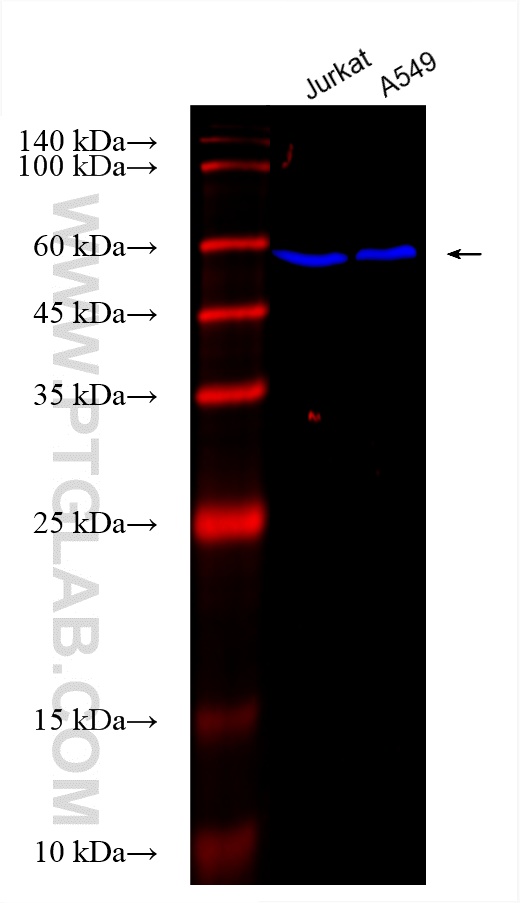验证数据展示
经过测试的应用
| Positive WB detected in | Jurkat cells |
推荐稀释比
| 应用 | 推荐稀释比 |
|---|---|
| Western Blot (WB) | WB : 1:500-1:2000 |
| It is recommended that this reagent should be titrated in each testing system to obtain optimal results. | |
| Sample-dependent, Check data in validation data gallery. | |
产品信息
CL750-81803 targets ATG5 in WB applications and shows reactivity with human, mouse, rat samples.
| 经测试应用 | WB Application Description |
| 经测试反应性 | human, mouse, rat |
| 免疫原 |
CatNo: Ag0214 Product name: Recombinant human ATG5 protein Source: e coli.-derived, PGEX-4T Tag: GST Domain: 28-275 aa of BC002699 Sequence: TEREAEPYYLLLPRVSYLTLVTDKVKKHFQKVMRQEDISEIWFEYEGTPLKWHYPIGLLFDLLASSSALPWNITVHFKSFPEKDLLHCPSKDAIEAHFMSCMKEADALKHKSQVINEMQKKDHKQLWMGLQNDRFDQFWAINRKLMEYPAEENGFRYIPFRIYQTTTERPFIQKLFRPVAADGQLHTLGDLLKEVCPSAIDPEDGEKKNQVMIHGIEPMLETPLQWLSEHLSYPDNFLHISIIPQPTD 种属同源性预测 |
| 宿主/亚型 | Rabbit / IgG |
| 抗体类别 | Recombinant |
| 产品类型 | Antibody |
| 全称 | ATG5 autophagy related 5 homolog (S. cerevisiae) |
| 别名 | 5M5, APG5, APG5 LIKE, APG5L, APG5-like |
| 计算分子量 | 32 kDa |
| 观测分子量 | 50-55 kDa |
| GenBank蛋白编号 | BC002699 |
| 基因名称 | ATG5 |
| Gene ID (NCBI) | 9474 |
| RRID | AB_3673735 |
| 偶联类型 | CoraLite® Plus 750 Fluorescent Dye |
| 最大激发/发射波长 | 755 nm / 780 nm |
| 形式 | Liquid |
| 纯化方式 | Protein A purification |
| UNIPROT ID | Q9H1Y0 |
| 储存缓冲液 | PBS with 50% glycerol, 0.05% Proclin300, 0.5% BSA, pH 7.3. |
| 储存条件 | Store at -20°C. Avoid exposure to light. Stable for one year after shipment. Aliquoting is unnecessary for -20oC storage. |
背景介绍
ATG5, also named as APG5L and ASP, belongs to the ATG5 family. It is required for autophagy. It plays an important role in the apoptotic process, possibly within the modified cytoskeleton. Its expression is a relatively late event in the apoptotic process, occurring downstream of caspase activity. Autophagy is a catabolic process for the autophagosomic-lysosomal degradation of bulk cytoplasmic contents. Formation of the autophagosome involves a ubiquitin-like conjugation system in which Atg12 is covalently bound to Atg5 and targeted to autophagosome vesicles. It mediates autophagosome-independent host protection. This antibody is raised against 28-275 amino acids of human ATG5. It can recognize the ATG5-ATG12 complex (55 kDa) which can be truncated and generate a 40-45 kDa band.
实验方案
| Product Specific Protocols | |
|---|---|
| WB protocol for CL Plus 750 ATG5 antibody CL750-81803 | Download protocol |
| Standard Protocols | |
|---|---|
| Click here to view our Standard Protocols |


